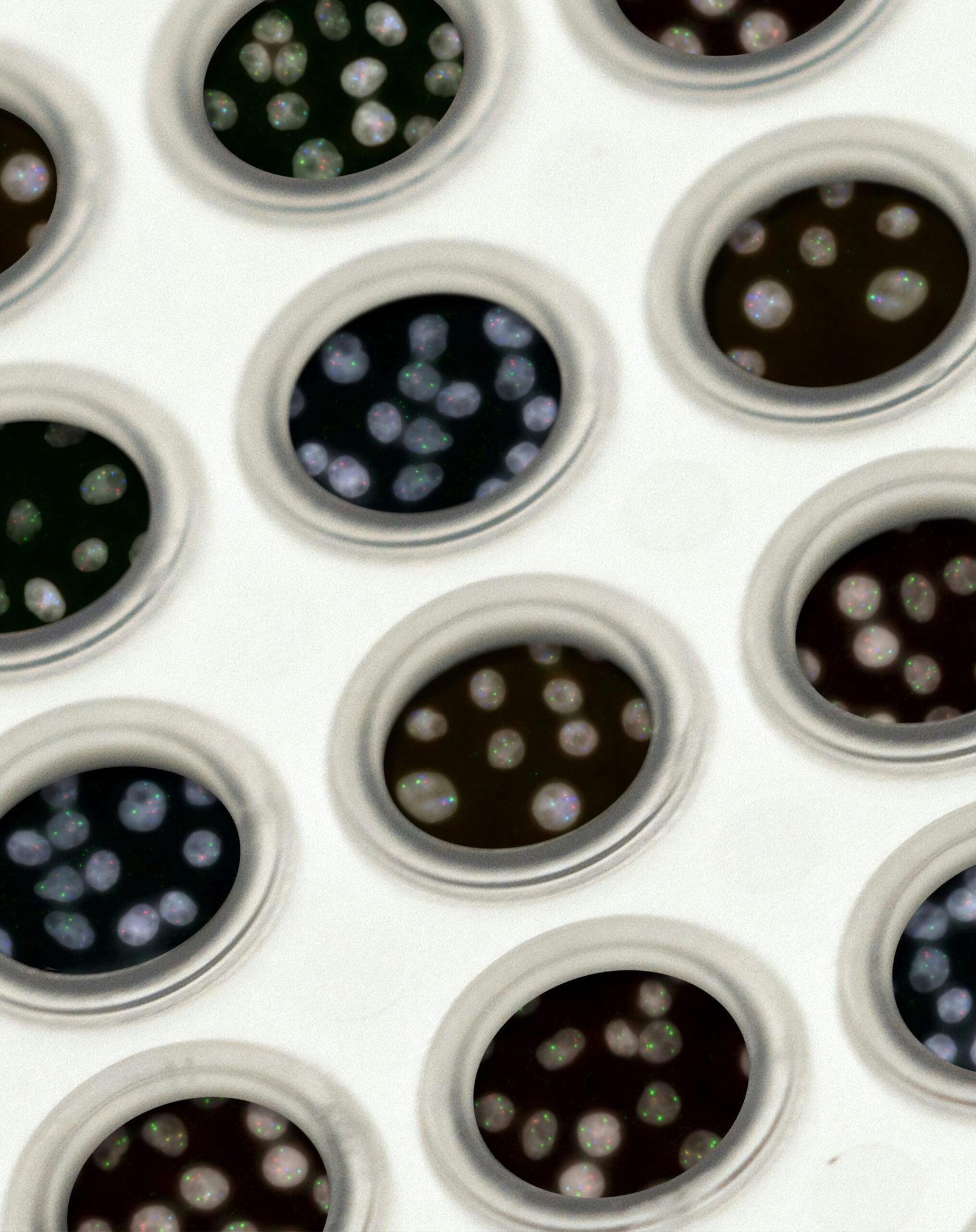Did you know that gout, the painful inflammatory arthritis that most commonly affects the big toe, can actually run in families? That's right, research suggests that you might be at a higher risk of developing this condition if your parents or close relatives have had it. But what exactly does it mean to inherit a predisposition to gout? In this article, we'll explore the fascinating connection between genetics and gout, and discover whether or not your family history could be the key to understanding your own risk. So sit back, relax, and get ready to unravel the mysteries of this hereditary condition.

Understanding Gout
Definition of Gout
Gout is a type of arthritis that occurs when there is a buildup of uric acid crystals in the joints. Uric acid is a waste product that is normally dissolved in the blood and excreted through urine. However, in individuals with gout, the body either produces too much uric acid or has difficulty eliminating it, leading to the formation of crystals. These crystals can cause severe pain, inflammation, and swelling in the affected joints. Gout commonly affects the big toe, but it can also occur in other joints such as the ankles, knees, elbows, and wrists.
Symptoms and Effects of Gout
The symptoms of gout typically manifest suddenly and can be extremely painful. The affected joint may become red, swollen, and tender to the touch. The pain is often described as a sharp, throbbing sensation that can be unbearable. Gout attacks can last for a few days to several weeks, and the frequency and severity of these attacks can vary from person to person.
If left untreated, gout can have long-term effects on the affected joints. Repeated gout attacks can lead to joint damage, deformity, and chronic pain. In severe cases, the accumulation of uric acid crystals can form tophi, which are hard deposits that can develop under the skin around the joints.
Causes of Gout
The primary cause of gout is an elevated level of uric acid in the blood, a condition known as hyperuricemia. Several factors can contribute to the development of hyperuricemia, including:
- Diet: Consumption of foods high in purines, such as red meat, seafood, and alcohol, can increase uric acid production.
- Genetics: Certain genetic variations can predispose individuals to higher uric acid levels and a greater risk of developing gout.
- Medical conditions: Conditions like obesity, high blood pressure, kidney disease, and diabetes can increase the likelihood of developing gout.
- Medications: Certain medications, such as diuretics, can interfere with the body's ability to eliminate uric acid, leading to gout.
Genetic Components of Gout
Influence of Genetics on Gout
Research has shown that genetics plays a significant role in the development of gout. Studies have identified specific genes associated with increased uric acid levels and an increased risk of gout. These genetic variations can affect the way the body processes and eliminates uric acid, making some individuals more susceptible to developing the condition.
How Genetics Affects Uric Acid Levels
Genetic variations can affect various aspects of uric acid metabolism, leading to elevated levels in the blood. One key gene involved in uric acid regulation is the SLC2A9 gene. Mutations in this gene have been linked to reduced excretion of uric acid, leading to higher levels in the blood. Other genes, such as ABCG2 and SLC22A12, have also been associated with gout risk by influencing uric acid transport and metabolism.
By understanding the genetic components of gout, researchers hope to develop personalized treatment approaches that target specific genes or gene pathways involved in uric acid regulation.
Inheriting Gout: Fact or Myth?
Can Gout be Passed Down Through Generations?
While gout does have a genetic component, it is not directly inherited like other genetic disorders. Gout is considered a complex multifactorial disease, meaning it is influenced by a combination of genetic and environmental factors. Having a family history of gout does increase the chances of developing the condition, but it does not guarantee its occurrence.
Inherited Risk Factors for Gout
Although gout itself is not directly inherited, certain genetic variants associated with higher uric acid levels can be passed down from parents to their children. This genetic susceptibility increases the risk of developing gout, especially when combined with other factors such as diet and lifestyle choices. Therefore, individuals with a family history of gout should be more cautious and proactive in managing their uric acid levels to reduce the risk of developing gout.
Studies Supporting the Genetic Factor of Gout
Key Research on Gout and Genetics
A growing body of research has focused on understanding the genetic factors involved in gout. One significant study published in the journal Nature Genetics identified several genetic variations associated with gout susceptibility. The study analyzed the DNA of thousands of individuals with gout and compared it to individuals without the condition. The researchers discovered multiple genes involved in uric acid metabolism that were linked to an increased risk of developing gout.
Discoveries of Specific Genes Related to Gout
In addition to the study mentioned above, other research has identified specific genes that play a role in gout development. For example, the ABCG2 gene has been found to be associated with an increased risk of gout and the formation of tophi. Understanding the specific genes involved in gout can provide valuable insights into the underlying mechanisms and potential targets for future treatments.

Environmental Factors Impacting Gout
How Lifestyle Contributes to Gout
While genetics plays a significant role in gout development, lifestyle factors also contribute to its occurrence. Poor diet choices, excessive alcohol intake, obesity, and sedentary behavior can all increase the risk of developing gout. By making positive lifestyle changes like adopting a healthy diet, maintaining a healthy weight, and engaging in regular physical activity, individuals can significantly reduce their risk of developing gout or manage its symptoms.
Influence of Diet and Exercise on Gout
Dietary choices, particularly the consumption of foods high in purines, can contribute to increased uric acid production and gout attacks. Limiting the intake of purine-rich foods like red meat, shellfish, and alcohol can help control uric acid levels. Exercise also plays a crucial role in gout management by promoting weight loss, improving insulin sensitivity, and reducing uric acid production. Regular physical activity, such as walking, swimming, or cycling, can help prevent gout attacks and maintain overall joint health.
Preventing Gout in High-Risk Individuals
Actionable Steps for Those with Family History of Gout
For individuals with a family history of gout, taking proactive measures to prevent its onset or manage its symptoms is essential. Some actionable steps include:
- Maintain a healthy weight: Obesity is a significant risk factor for gout. By achieving and maintaining a healthy weight, individuals can reduce their risk of developing the condition.
- Follow a balanced diet: Avoid or limit the consumption of foods high in purines, such as red meat, organ meats, shellfish, and certain types of fish. Instead, opt for a well-balanced diet that includes plenty of fruits, vegetables, whole grains, and lean proteins.
- Stay hydrated: Drinking an adequate amount of water can help dilute uric acid levels in the blood and promote its excretion through urine.
- Limit alcohol intake: Alcohol can increase uric acid levels and trigger gout attacks. Moderation or avoidance of alcohol is important for managing gout symptoms.
- Discuss medication options with a healthcare professional: In some cases, medications may be prescribed to help manage uric acid levels and prevent gout attacks. Consultation with a healthcare professional is necessary to determine the most suitable treatment approach.
Gout Prevention Techniques
Aside from the specific steps mentioned above, several general techniques can help prevent gout onset or reduce the frequency of gout attacks. These include:
- Avoiding or limiting the consumption of sugary beverages and foods high in fructose.
- Maintaining a regular exercise routine to promote weight management and overall health.
- Practicing stress-reducing techniques like relaxation exercises and meditation.
- Limiting the intake of caffeine, as it may increase uric acid levels in some individuals.
- Using caution when taking medications that can raise uric acid levels, such as diuretics and low-dose aspirin.

Genomic and Personalized Medicine for Gout
Role of Genomic Medicine in Treating Gout
Advancements in genomic medicine have opened up new possibilities for personalized treatment approaches for gout. By analyzing an individual's genetic profile, healthcare professionals can identify specific genetic variants related to gout and tailor treatment plans accordingly. This approach can lead to more effective and targeted therapies, potentially reducing the frequency and severity of gout attacks and improving overall patient outcomes.
Exploring Personalized Treatment Plans for Gout
Personalized treatment plans for gout may include a combination of lifestyle modifications, dietary changes, and medication. With the help of genetic testing and analysis, healthcare professionals can identify the most suitable medications for individuals based on their genetic profiles. This approach aims to optimize treatment effectiveness while minimizing the risk of adverse reactions. Additionally, personalized treatment plans can be regularly adjusted based on individual responses and needs, ensuring the most effective management of gout symptoms.
Living with Gout
The Daily Life with Gout
Living with gout can be challenging, as it often involves managing pain, avoiding triggers, and making ongoing lifestyle adjustments. Individuals with gout may need to consider factors such as diet choices, alcohol consumption, weight management, and stress levels on a daily basis. Staying proactive with gout management, including adhering to treatment plans and making necessary lifestyle changes, can greatly improve quality of life and reduce the frequency and severity of gout attacks.
Challenges of a Gout Patient
Gout patients face a range of challenges associated with the condition. These challenges can include:
- Dealing with severe pain during gout attacks.
- Limiting or avoiding certain foods and beverages that can trigger gout attacks.
- Managing the side effects of medications used to treat gout.
- Struggling with lifestyle modifications, such as maintaining a healthy weight or adopting a new diet.
- Navigating social situations where dietary restrictions due to gout may limit food and beverage choices.
It is important for individuals with gout to have a strong support system that includes healthcare professionals, friends, and family members who can provide understanding, guidance, and encouragement throughout the gout management journey.
Early Detection of Gout in Genetically Predisposed Individuals
Importance of Early Diagnosis
Early detection of gout is crucial for effectively managing the condition and preventing long-term joint damage. For individuals with a genetic predisposition to gout, being aware of the potential risk and monitoring for early signs and symptoms can lead to prompt diagnosis and early intervention. Early treatment can help alleviate pain, reduce the frequency of gout attacks, and prevent complications associated with chronic gout.
Screening and Testing Methods
Several screening and testing methods can aid in the early detection of gout in genetically predisposed individuals. These include:
- Blood tests: Blood tests can measure uric acid levels in the blood, helping to identify hyperuricemia and assess the risk of developing gout.
- Joint fluid analysis: Aspiration and analysis of joint fluid can confirm the presence of uric acid crystals and rule out other conditions with similar symptoms.
- Imaging tests: X-rays, ultrasounds, or CT scans may be used to visualize joint damage, tophi formation, or other structural changes associated with gout.
By utilizing these screening and testing methods, healthcare professionals can accurately diagnose gout at an early stage, enabling timely treatment and improved patient outcomes.
Case Studies
Cases Supporting the Genetic Link in Gout
Various case studies have contributed to the understanding of the genetic link in gout. These studies have highlighted the importance of genetic factors in the development and progression of gout. By analyzing the genetic profiles of individuals with gout, researchers have identified specific genes and genetic variations that are associated with the condition. These case studies have provided valuable insights into the underlying mechanisms of gout and paved the way for further research in personalized treatment approaches.
Success Stories of Managing Gout in High-Risk Individuals
Many individuals with a family history of gout have successfully managed the condition by implementing lifestyle modifications, following treatment plans, and taking preventative measures. These success stories highlight the importance of early diagnosis, proactive management, and personalized treatment approaches in effectively controlling gout. By taking an active role in their own healthcare and making the necessary adjustments, individuals at high risk for gout can lead fulfilling lives while keeping gout symptoms under control.
In conclusion, while gout has a strong genetic component, it is influenced by a combination of genetic and environmental factors. Understanding the genetic factors involved in gout can help tailor treatment approaches and identify high-risk individuals who could benefit from early detection and intervention. By making positive lifestyle choices, implementing personalized treatment plans, and staying proactive, individuals can effectively manage gout, reduce the frequency and severity of attacks, and improve their overall quality of life.